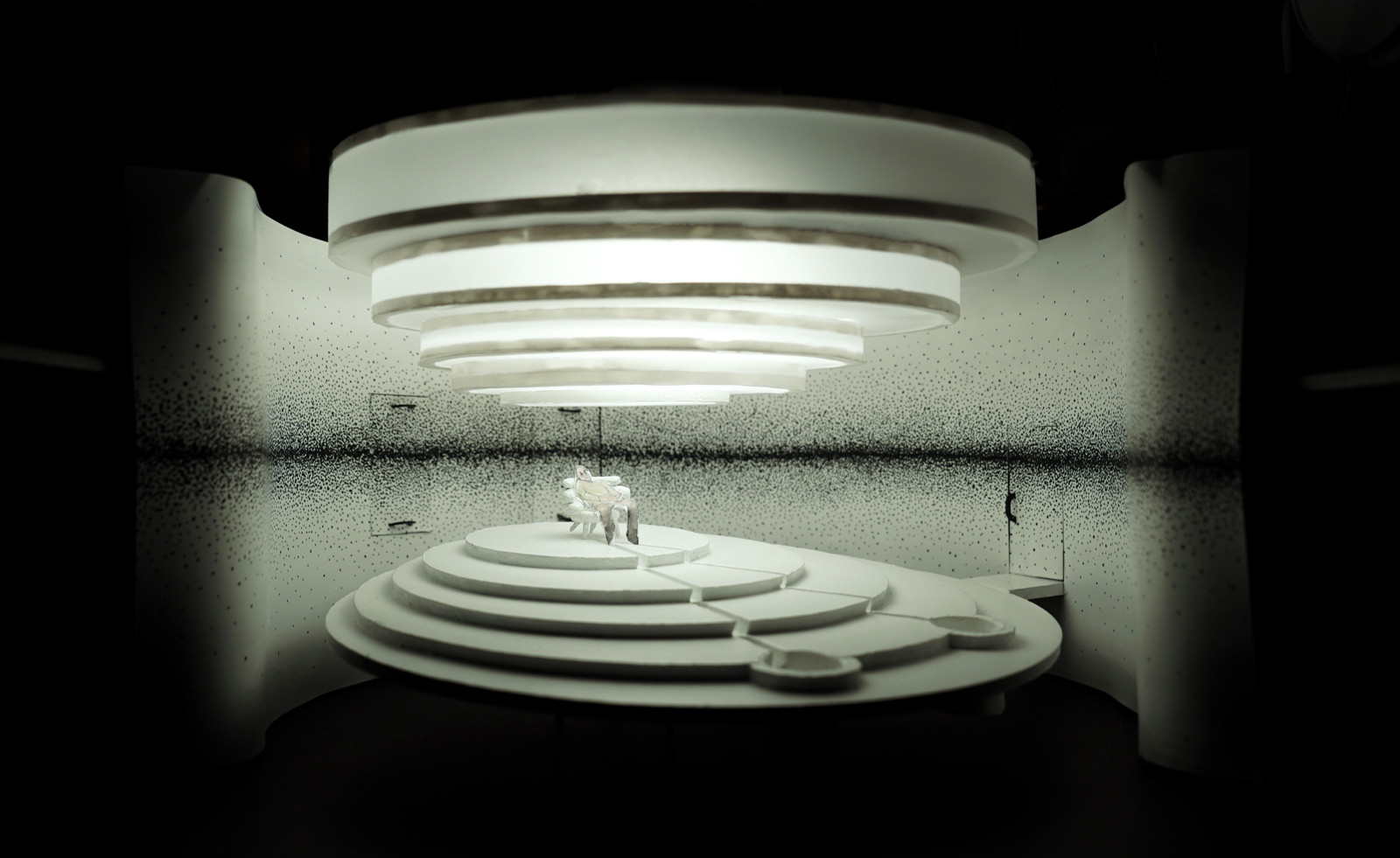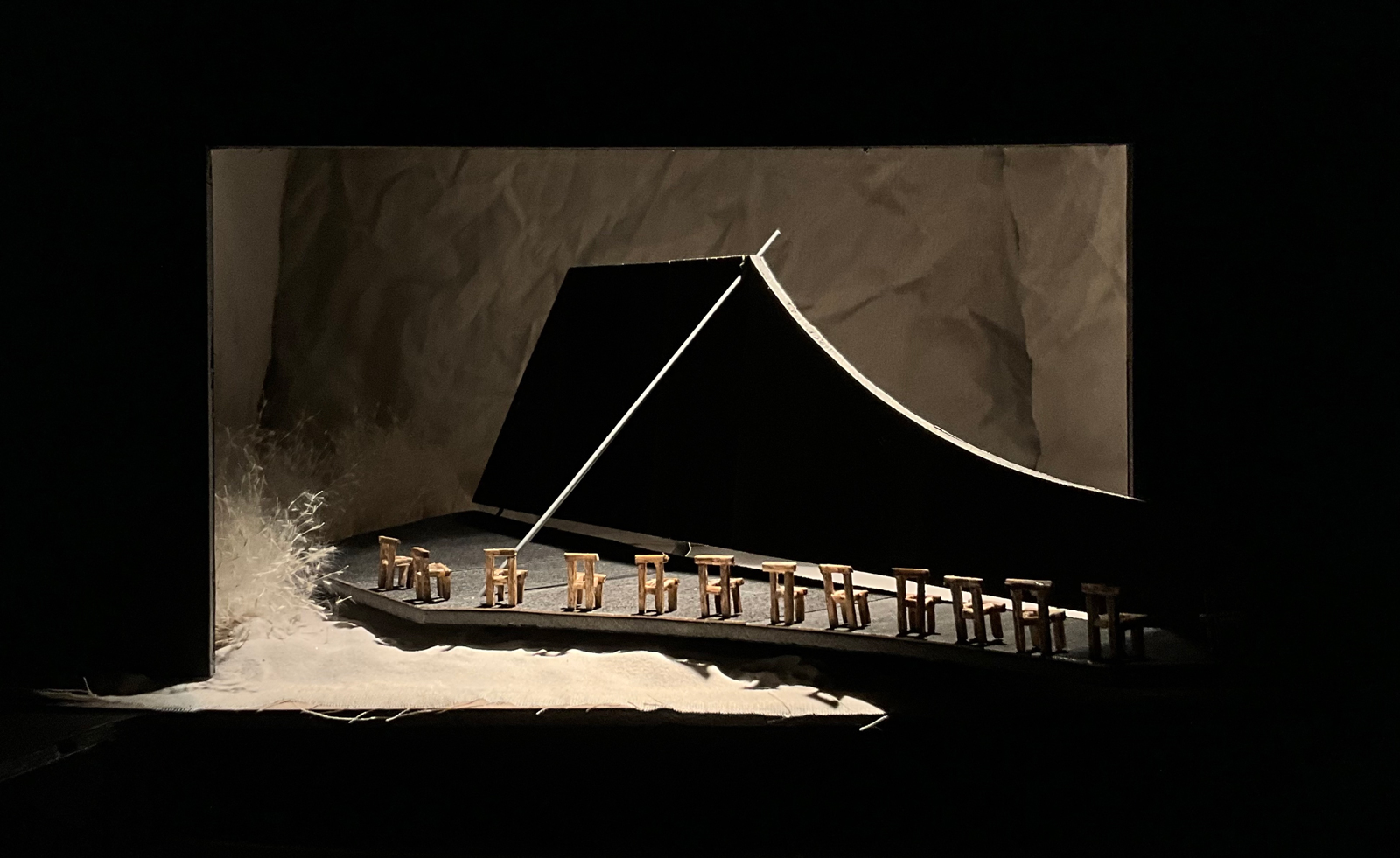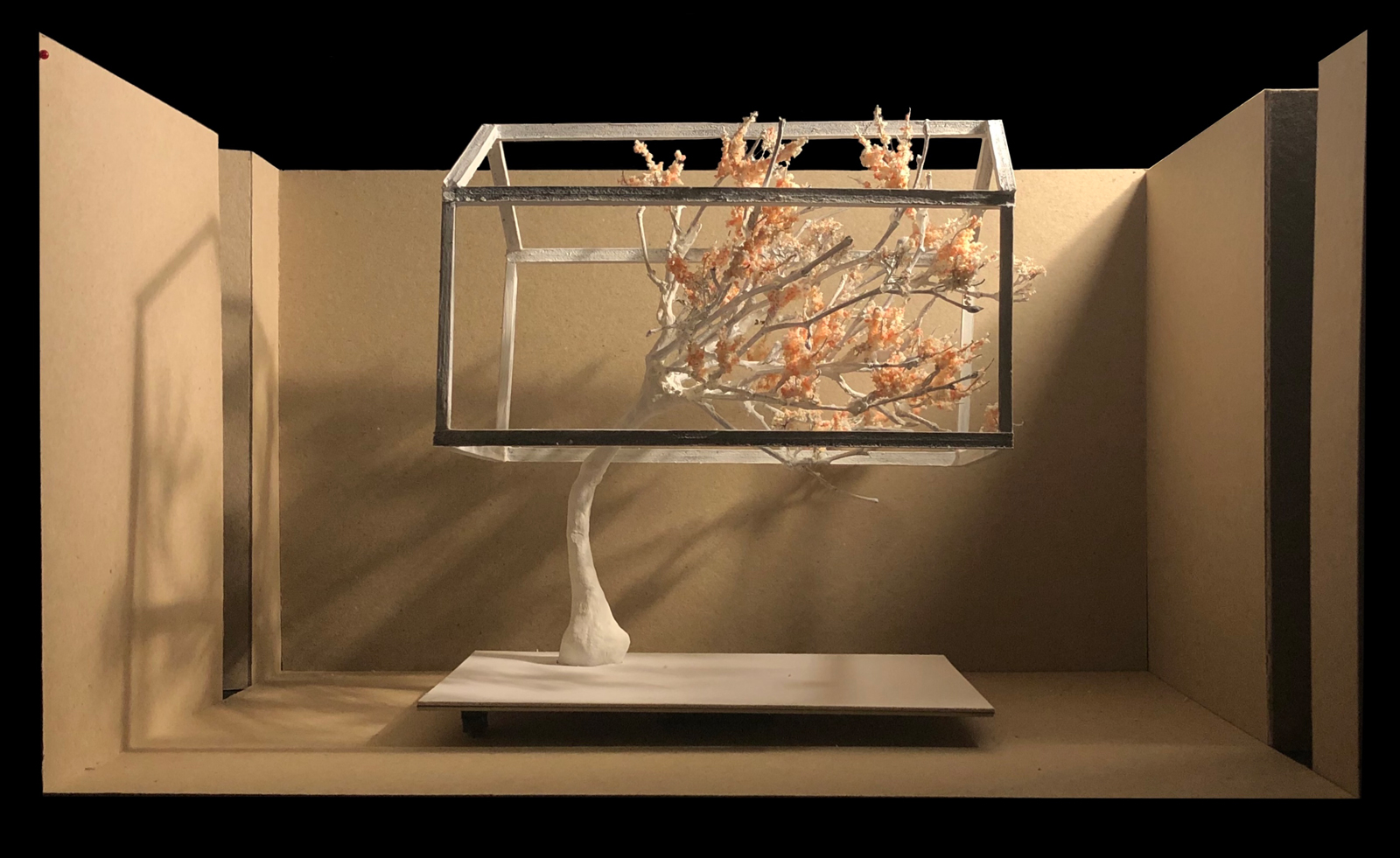
Kickstarting the careers of previous winners such as Es Devlin, Peter Butler and Rose Revitt, the Linbury Prize has been spotlighting the next generation of theatre set design talent since its inception in 1987. The 12 recipients of the 2023 prize are currently showcasing their work in an exhibition at London’s National Theatre (until 30 March 2024), embracing a variety of forms and mixed media, from sketches, production photography and model boxes to costumes, life-sized puppetry and digital stage designs.
‘What excites me most is to see a production in which the set is as alive as the performers,’ says recipient Finlay Jenner. ‘Where you are watching a dialogue between the set and the other mediums of theatre as if acting as a unified organism. I believe that a set design should have a visual dramaturgy and flow.’ Jenner was inspired by the likes of John Baldessari and Viennese Actionism to create work that eschews typical limitations. The design Jenner entered for the Linbury Prize was for a play about decay and isolation, subverting a confined space to feel ominously infinite by creating an endless horizon line. ‘As an audience member, your eyes struggle to focus and your brain begins to make constellations that don’t exist,’ he says.
Linbury Prize honours latest theatre set design stars

‘An inspirational set creates an exciting and explorative magic box for actors and other creatives to open the doors to,’ says Peiyao Wang, whose design for The Cherry Orchard was muted, a location change signalled only by a rotating tree. Meanwhile, her design for The Exterminating Angel opera riffs on the electronic acoustics, with the set becoming a grand piano lid.
‘This farce suddenly becomes a delusional concert where the bodies are conducted by their humanity to compose this manic music score.’ Good theatre set design should invite viewers to step into the story, adds recipient Yimei Zhao. ‘A space not only for the characters to live in, but which also allows the audience to expand their imagination and provoke unique feelings. Additionally, it works harmoniously with other elements, such as costumes, lighting, sound and projections, when they all come together to form a cohesive whole, and serve the story well.

‘In the design stage, the challenge is to constantly consider feasibility, finding a balance between these aspects while retaining enthusiasm for exploring new ideas. Moving into the production phase often presents the challenge of creatively solving technical problems within a tight time frame. I believe that these limitations and restrictions can spark inspiration.’
Zhao, Wang and Jenner join Ania Levy, Bethan Wall, Biz Sutton, Jodie Yates, Nitin Parmar, Ola Kłos, Tallulah Caskey, Tiffany Fraser Steele and Yijing Chen as the recipients of a £5,000 bursary prize and a design placement, offering a first-hand experience of the production process.
The Linbury Prize for Stage Design exhibition is on show until 30 March 2024 in the Lyttelton Lounge at the National Theatre, London SE1
nationaltheatre.org.uk, thelinburyprize.com
A version of this story appears in the January 2024 Next Generation Issue of Wallpaper*, available in print, on the Wallpaper* app on Apple iOS, and to subscribers of Apple News +. Subscribe to Wallpaper* today!







